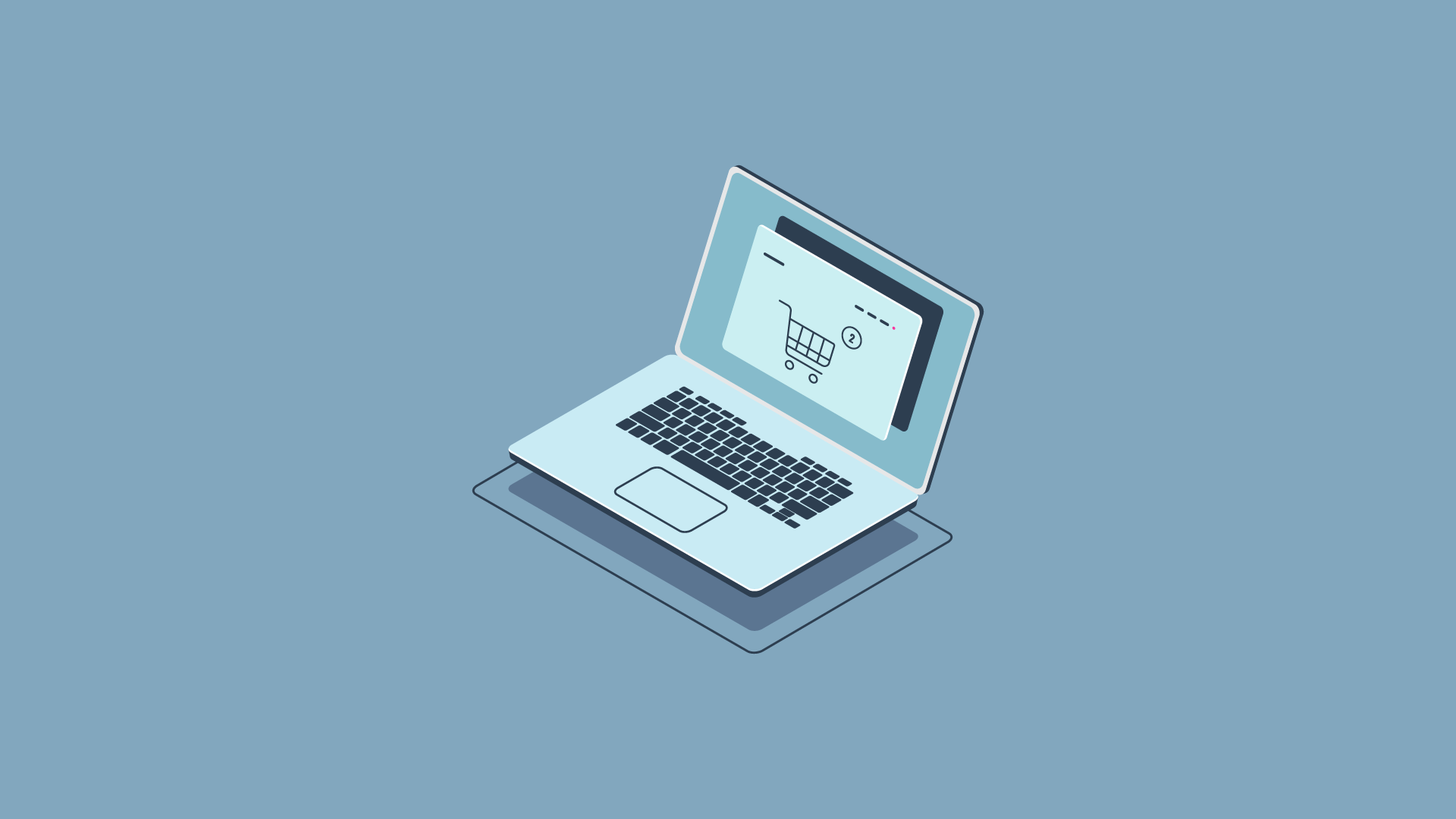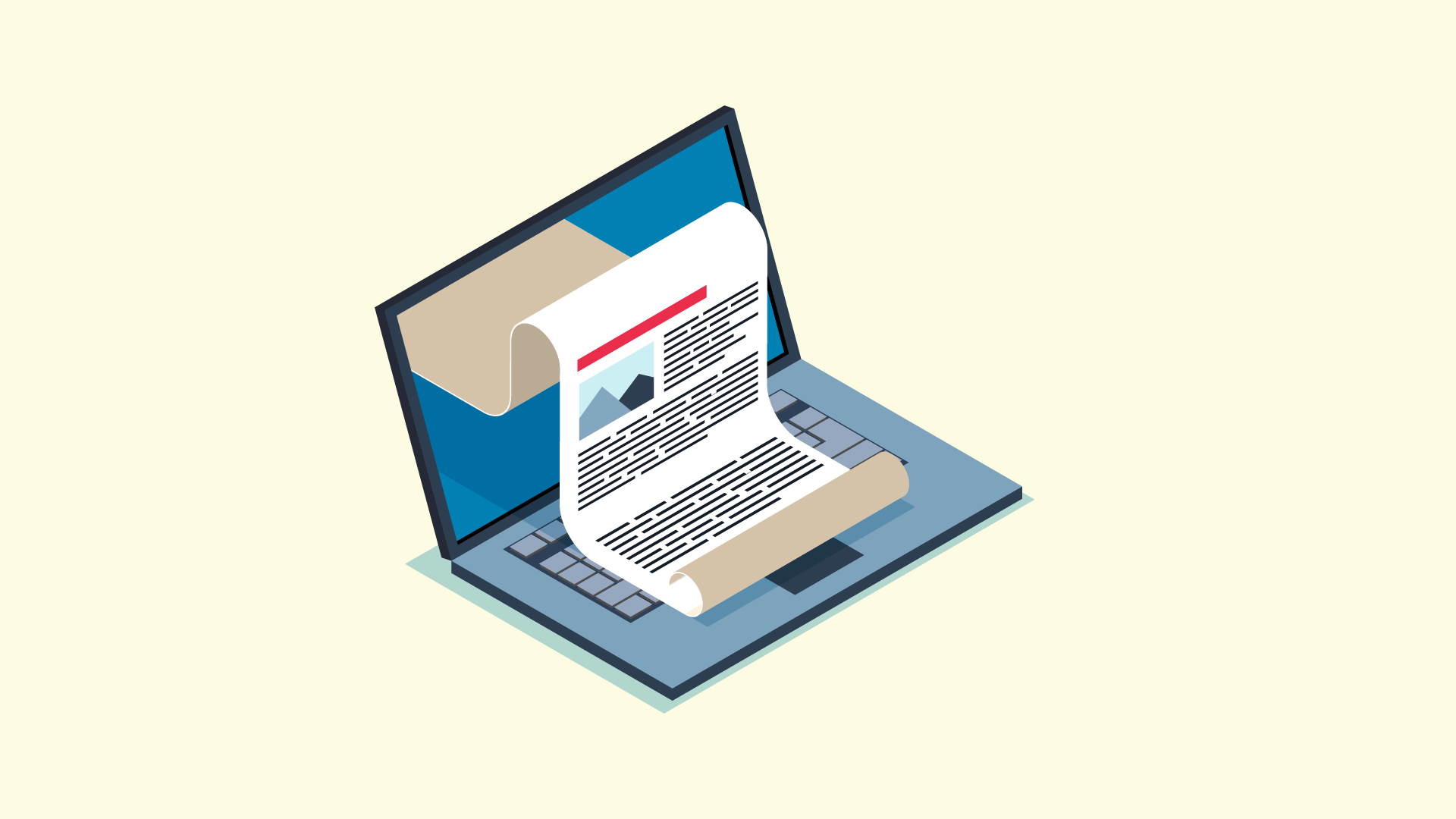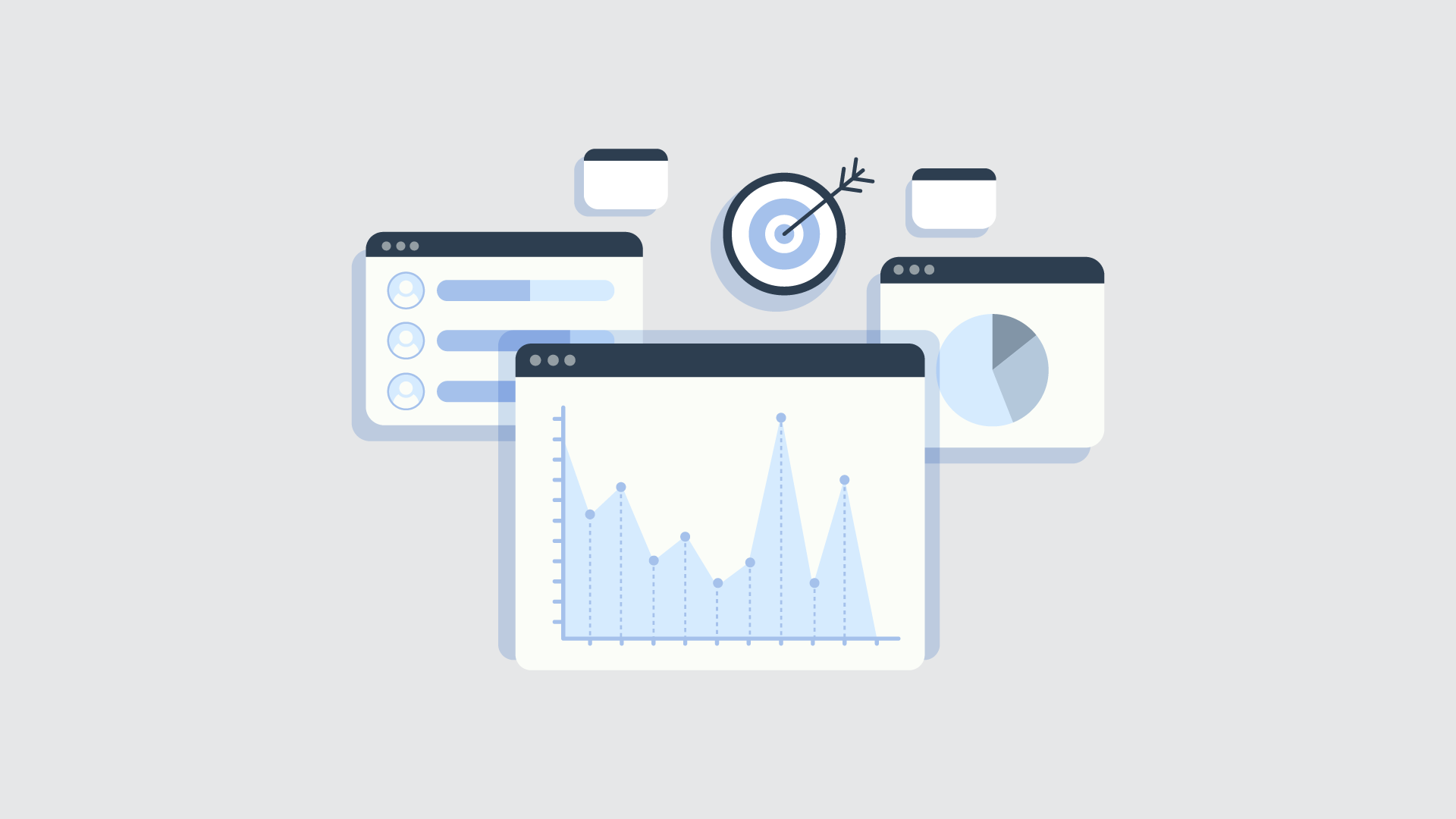Are you looking to increase your sales? Have you heard about frictionless sales but don’t understand what it means?
In today’s world, there is so much competition and it can be difficult for businesses to stand out. The new “frictionless” trend aims to help businesses streamline their sales process by eliminating barriers and unnecessary steps which cost time and reduce customer satisfaction.
Frictionless selling is a revolutionary approach to sales that focuses on collaboration between buyers and sellers. By reducing friction, this method creates an easier, more engaging experience for both parties. This type of selling prioritizes collaboration over traditional methods of simply “selling at” customers.
By reducing friction in the sales process, customers are more likely to have a positive experience and be more open to making purchases.
In this blog post, we'll discuss frictionless selling, the frictionless framework, and how you can incorporate this new approach into your sales model.
|
Frictional Sales |
The Sales Funnel Is an Outdated Model
Those in the sales field will understand the concept of a sales funnel and how it functions. The sales funnel is a widely used model in the sales industry, but it is becoming increasingly outdated.
The funnel works by generating a large number of leads at the top, and then gradually narrowing down to those who engage with your company and eventually convert into customers. However, this model fails to take into account the complexities of modern sales processes.
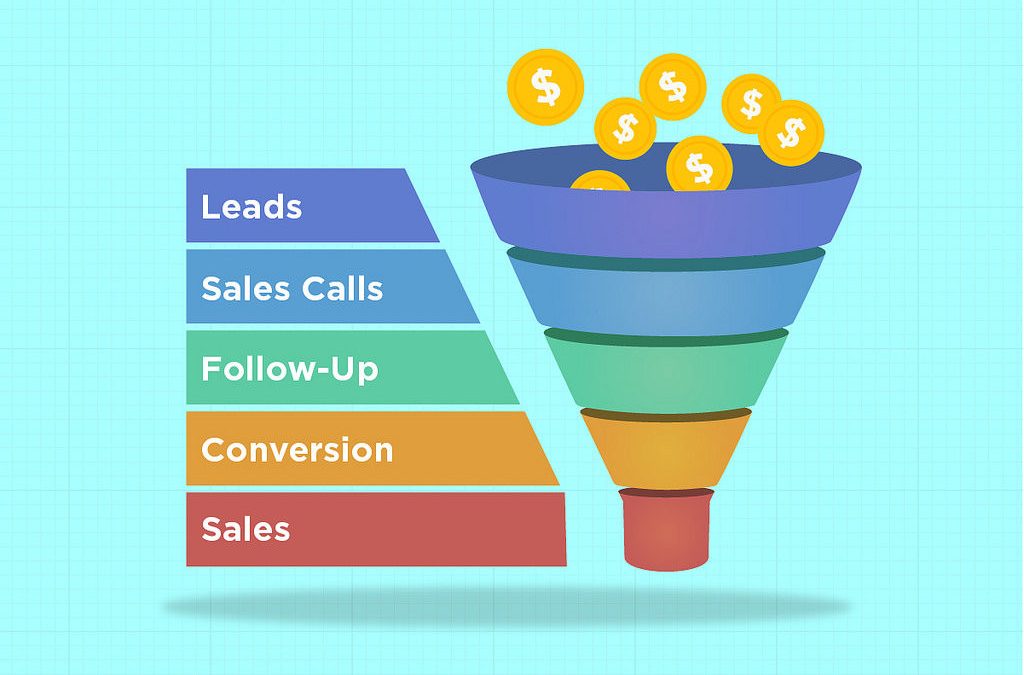
For example, when using a funnel, you only get output as long as you're continuously feeding in input. This means that if you stop putting effort into lead generation or customer engagement, your output will suffer.
Also, the funnel doesn't take into account other factors such as customer loyalty or repeat purchases which can have an impact on overall sales performance.
In the real world, customers at the bottom of the funnel have a major influence on those at the top. Reading a positive review about your business on a third-party site could lead prospects to request a quote from you or schedule a product demo.
As such, businesses need to look beyond the traditional sales funnel and consider other models that better reflect how their customers interact with their products and services.
Why You Should Use the Flywheel Model Instead of the Funnel
Rather than envisioning your sales operations as a funnel, think of it as a flywheel, which is a machine that conserves rotational energy.
This means that each rotation of the flywheel can be seen as growth for your company. To get this growth, you can either add force or remove friction from the wheel.
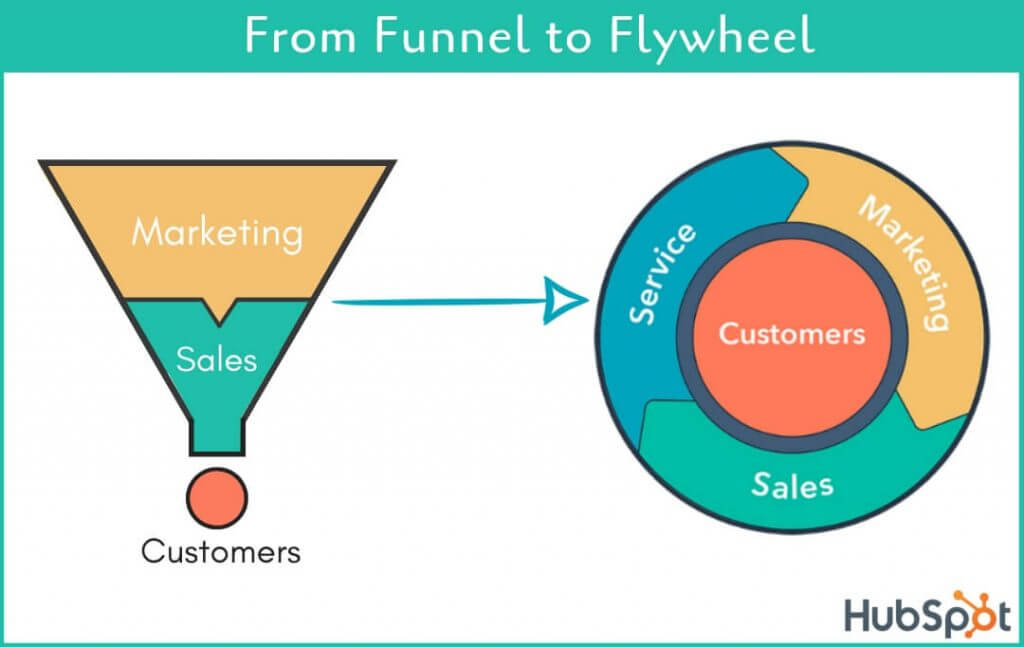
If you add force, the flywheel spins. Add more force and it spins faster. A flywheel will keep on spinning unless there's enough friction to slow it down, therefore you can look at each rotation of the flywheel as the growth of your company.
Adding force to the wheel is done by investing in marketing and sales activities that will bring more customers into your business. You can also use tactics such as upselling and cross-selling to increase customer loyalty and encourage them to purchase more from you.
On the other hand, removing friction from the wheel involves streamlining processes and making sure that customers have an easy time interacting with your business. This could include improving customer service, simplifying checkout processes, or providing helpful resources on your website. By using both strategies together, you can ensure that your flywheel continues spinning faster and faster over time.
It involves setting higher sales targets, hiring more reps, or requiring your reps to make extra calls daily.
Removing friction, on the other hand, is where most companies fall short. So it's helpful to look for processes and items to troubleshoot so you stop slowing down your sales.
What is frictionless selling?
Frictionless selling is making the entire sales process as easy as possible for your customers. B2C companies have an advantage when it comes to this, while B2B companies tend to struggle.
This means removing any obstacles that may be preventing customers from completing their purchases, such as long forms, complicated checkout processes, or slow loading times. By doing this, businesses can make their reps' output more fruitful and increase their close rates and won deals.
Although it's not possible to create a completely effortless buying process, you should try to minimize the obstacles as much as possible. Completing this task will significantly increase your reps' success rate by making their efforts more effective, allowing them to close more deals.
The Frictionless Selling Framework
The Frictionless Selling Framework is a powerful tool developed by HubSpot to help sales teams maximize their efficiency and effectiveness.
There are three stages to frictionless selling:
- Enable your team to spend more time selling.
- Align your team with your target buyer.
- Transform your team through a culture of learning.
Each stage has its own set of strategies and tactics that can be implemented to ensure success.
1. Enable
Sales teams need to be able to prioritize their efforts in order to maximize their sales results. Unfortunately, many reps don’t know where to focus and may not be allocating their time and effort wisely. Lead scraping and cold calling are essentially no different from looking for a needle in a haystack.
Considering this, it is the responsibility of the sales manager or director to help their team focus on what matters and spend more time selling. This can be achieved by:
- Analyzing your sales processes. Do these processes need to be updated? What steps can be taken to maximize productivity with these processes?
- Evaluating your sales tools and technologies. Are there any redundancies? Are any weaknesses limiting the team's productivity? Does the team lack any necessary integrations?
- Analyzing the daily tasks of representatives. Which activities take up most of a rep's time? Which parts of the process are challenging? Which entry-level tasks can be automated so that sales representatives can focus on generating more revenue?
Beware: Self-reporting can be easy, however, it may not always give you the most reliable results.
To enhance productivity, you can have your representatives utilize time-tracking applications. This not only improves their time management skills and enables them to keep a more accurate record of their hours. It also allows you to quickly jump in and manage tasks that are proving unproductive or inefficient.
2. Align
Aligning your team with your target buyer is an essential step in reducing friction and making it easier for them to say “Yes!” to a sale.
You can do this by:
- Having round-the-clock customer service. By offering 24/7 customer service with the help of live chat on your website and freelancers from around the world, you can ensure that your team is available anytime for prospects in any time zone.
- Making it easy for your clients to schedule meetings with you. Offering your clients a simpler way to schedule meetings with you can be done through a tool like Calendly, eliminating lengthy back-and-forth emails.
- Providing transparent pricing and discounts. Letting customers know your prices and offering discounts is a great way to establish trust.
- Making it simple for buyers to cancel. It should be easy for buyers to terminate the contract. If you require a two-year commitment, this could be seen as trouble.
3. Transform
To complete frictionless selling, your team must adapt to a culture of continuous learning. You should provide your team with the right training to enable them to engage productively with potential customers and provide useful information, rather than just pushing the hard sell all the time.
According to a HubSpot study, 60% of B2B customers doubt the honesty of salespeople. There is clearly a need to address this lack of trust.
If you have a large sales team, get a few people on board to start adapting to the new way of working. When they've achieved success, the rest of your team will be keen to join in.
Here, you'll want to do:
- Instead of relying on spreadsheets, leverage sophisticated data reporting tools that provide you with real-time data.
- Give playbooks and other learning materials to new or struggling reps.
- Encourage your reps to share their knowledge and successful strategies with the other members of the team.
- Spend less time on reporting and more time on sales coaching.
Ready to grow with Frictionless
In conclusion, frictionless sales are a great way to increase customer satisfaction and reduce overhead costs for businesses. With the right tools and strategies, you can create an efficient, streamlined buying process that is bound to leave customers happy and drive sales.
By investing in a frictionless sales process, you can stay ahead of your competition and make sure you remain competitive in an increasingly competitive landscape.
Not only will frictionless sales enable businesses to improve efficiency and maximize profits, but understanding the needs of customers will ensure a smoother journey for them across the entire buying process. Frictionless sales have the potential to truly change the way we view selling – so make sure your business maintains a competitive edge by taking steps toward adopting this innovative concept as soon as possible.
With the right tools and processes in place, you could be well on your way to creating a successful business model built around frictionless sales.
